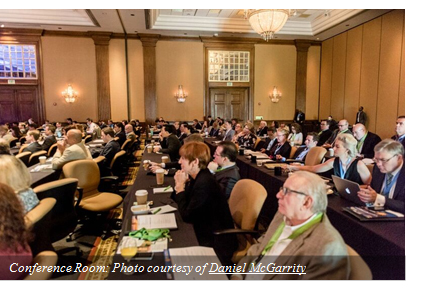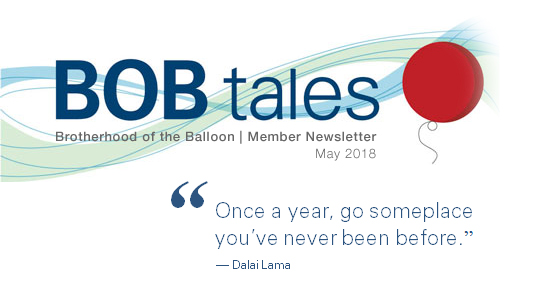
Dear Members: (a note from Deb Hickey):
Sunday, March 25, 2018:
I’m sitting at Boston’s Logan airport with my boarding pass in one hand and a (family-sized) box of Clorox wipes in the other. I don’t mess around—airplanes are germ-ridden incubators and I’m going to speak on a panel at the sixth annual National Association for Proton Therapy conference in Scottsdale, AZ in two days.
I’m excited to meet and reconnect with people from the proton world, including representatives from almost all the proton centers—oncologists, administrators, marketers, researchers, and physicists. I look forward to learning about the latest proton technology and expect a lot of talk about insurance coverage. I’m also always interested in proton therapy for pediatric patients—I love hearing about the new ways protons can be used to treat so many cancers in children.
I’m honored to be on the speaking panel, Advocating for Proton Therapy and feel our organization is a perfect fit for the topic because that’s what we do—through our website, our newsletter, our email communications, our PowerPoint presentation, Bob Marckini’s book, our social media accounts, and most important, our members. The value that our members provide in advocating for proton therapy for prostate cancer is immeasurable. By speaking with others, sharing Bob’s book, presenting the BOB PowerPoint in your communities, volunteering to be on our reference lists, writing testimonials and sharing your stories with us, and passing along our newsletter to others, you are making a difference. I feel privileged to be a channel through which your good intentions are filtered.
When I joined my father, Bob Marckini, about eight years ago to help him with this “ministry,” I had no idea I’d become a part of such an important movement—working to ensure patients have access to what I believe is the best treatment available for so many cancers, especially prostate. I have connected with some of the most selfless and motivated individuals over the years. They give their time and their knowledge; they share their personal stories; and they dig into their pockets to contribute to proton therapy research. Some of you travel long distances to meet prospective proton patients face-to-face to share your experience of proton therapy. Some of you have contributed to our newsletter, written articles for newspapers and magazines, blogs, and even books about your experience of proton therapy. We have hundreds of members on our patient reference lists who volunteer their time to connect with men and their family members who are scared and confused by all the treatment options and potential side effects. I am overwhelmed with gratitude for all this, and I look forward to the day when it’s no longer a struggle to receive insurance reimbursement for proton therapy, a topic that would receive much attention at this year’s conference.
Monday, March 26, 2018:
Large cacti are abundant here. I nearly fell out the taxi’s window trying to get a good look at a huge cactus on the side of the highway on my way to the conference center. I have no doubt the driver thought I was a crazy easterner who had never left my side of the country; but the beauty of Arizona is overwhelming.
This morning I was excited to listen to Congressman Jeff Miller and Adaeze Enekwechi, PhD, as they spoke about the 2018 health reform agenda and the impact on the oncology community in a fireside chat setting. That was followed by eight sessions focusing primarily on the challenges faced with private insurance companies covering proton therapy for several tumor sites, including prostate cancer, and the importance of making proton more accessible and economical.
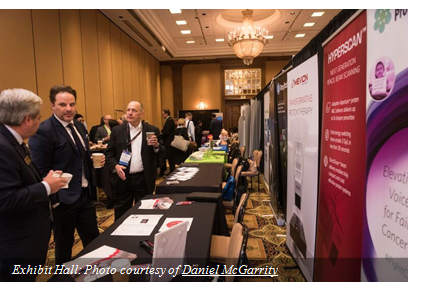 During the breaks, I joined other conference attendees in the exhibition hall to visit the many interesting displays highlighting the latest in proton treatment-related technologies.
During the breaks, I joined other conference attendees in the exhibition hall to visit the many interesting displays highlighting the latest in proton treatment-related technologies.
At the end of the day, conference attendees were invited to tour Mayo Clinic’s Proton Therapy Center in nearby Phoenix. There were four buses to take all of us to the facility. Interestingly, all four drivers went to the wrong hospital and what should have been a 10-minute ride turned into an hour and a half excursion. On the bright side, I sat next to a brilliant radiation oncologist (with an affinity for splashy golf shirts) and we had a wonderful conversation.
Tuesday, March 27, 2018:
The day didn’t start well. For some reason my alarm didn’t go off. A loud noise in the next room startled me awake and I sprung out of bed hoping not to be late for the first meeting of the day. As I rushed to get ready, the hairdryer caught on fire and singed the left side of my head. My electric toothbrush battery died. And worse, the cleaning service forgot to refill my coffee packets so I had to drink decaf!
I figured the whole day was doomed, but I was wrong. The first session was about proton therapy for pediatric patients and one of the presenters was my new oncologist friend wearing a Spiderman shirt. He did a fantastic job, as did the other panelists, and I learned the use of protons for a wide range of pediatric cancers is increasing. Also, it warmed my heart to hear the extent to which proton centers go to take care of children in treatment as well as their family members.
Later that morning, I thoroughly enjoyed a panel titled, Marketing and Patient Engagement: Building Referrals and Creating a Proton Community. Speakers from five proton centers discussed the importance and cost-effectivness of using social media to amplify marketing messages and spread the word about proton therapy.
That afternoon, Dr. Nancy Mendenhall, medical director from UFHPTI, talked about the critically important COMPPARE trial, comparing proton therapy to IMRT for prostate cancer, which we’ve mentioned in previous newsletters.
Though I feel like this reads like an exhaustive journal entry, there’s a lot more of this incredible conference to report on. We will do so in our June issue of BOB Tales after reviewing my notes, all of the presentations, and the myriad photos taken by the professional photographer on site.
Wednesday, March 28, 2018:
On my flight back, as I whipped out my Clorox box and starting wiping down my seat, the lady sitting next to me whispered to her husband with a look of horror on her face—not too quietly, I might add—“She’s cleaning her seat!” The husband replied, “Would you like to switch seats, honey?” I thought to myself—Switch seats!? Why would my sanitation actions be offensive? She should be thanking me and asking to borrow a wipe.
Needless to say, neither of them used antibacterial—even on their tray tables. Have you read our April 2017 BOB Tales article about the dirtiest spots on an airplane? If not, you might want to take a gander at the “Health” section. I think my sanitizing efforts were entirely appropriate.
This Month’s BOB Tales
In this issue we discuss two drugs that give patients with metastatic prostate cancer new hope. We also write about the importance of getting a second opinion on biopsy slides, citing a couple of surprising examples of why it’s so important. There’s a new Mayo Clinic study comparing proton therapy to conventional radiation in older patients with esophageal cancer—yet another study that shows improved survival and fewer side effects with proton therapy. In our “Flashback” section, you’ll learn that loss of sexual function is more common after surgery than previously thought. We also have great newsletter feedback from our readers as well as some special stories on some of our members. For all of you who live in the Portland, OR area, there’s a BOB reunion and Loma Linda alumni meeting coming up in May—details below.
As always, we hope you enjoy the May issue of BOB Tales and we welcome your feedback.
Deb Hickey
To print the BOB Tales newsletter or view the newsletter with a larger font size, click here for the PDF file.
In this Issue:
- New Hope for Metastatic Prostate Cancer Patients
- Second Opinion on Biopsy Slides—Two More Reasons Why
- Proton Therapy vs. Conventional Radiation in Older Patients with Esophageal Cancer
- Impotence More Common After Surgery than Previously Thought
- It’s Never too Late to Stop Smoking
- Diabetes from Mouthwash?
- The Benefits of Sunlight
- Brain Teaser Answer—and a New Challenge
- Children of the Fabulous ’50s

New Hope for Metastatic Prostate Cancer Patients
A recent article in The New York Times discusses the use of two drugs that are intended for use with men who have failed androgen deprivation therapy (ADT), typically involving Lupron to reduce production of testosterone, a phenomenon known as “castration resistance.” Instead, the drugs instead work by blocking testosterone from binding to and entering prostate cancer cells.
One of the drugs, enzalutamide (a.k.a. Xtandi), is already in use for men with ADT resistance and evident metastases (using conventional scans), but there is a potential use for men whose tumors aren’t yet evident but whose PSA is rising uncontrollably.
An additional drug, apalutamide, shows even greater promise, increasing the detection-free span to an average of 40.5 months, whereas enzalutamide recipients averaged 36.6 months before metastases could be detected.
Men receiving a placebo experienced evident metastases in an average of just 16.2 months. Neither drug is being touted as a cure, but delaying progression by over two years is a significant advance! Unfortunately, these drugs are very expensive; enzalutamide treatment costs over $10,000 per month.
Despite the advances in the treatment of metastatic prostate cancer, it is still very important to detect the disease before it escapes the prostate. Many experts consider prostate cancer to be manageable but not curable once it escapes the prostate. All the more reason to get your PSA and DRE checks every year, no matter what the U.S. Preventive Task Force recommendations state!
Second Opinion on Biopsy Slides—Two More Reasons Why
We regularly recommend to newly diagnosed patients that they consider getting a second opinion on their biopsy results. Why? Because the reading of biopsy slides is somewhat subjective and it’s not uncommon for two pathologists to report different results. And, since your customized treatment protocol will depend to a large extent on your Gleason score, it’s important that the “right” Gleason score be used.
One of the best pathology labs in the country is Dr. Jonathan Epstein’s at Johns Hopkins. We often suggest his lab for a second opinion. We have reported here in the past that in two cases we’re aware of, patients who were told they had prostate cancer and were scheduled for treatment were told by Dr. Epstein that he saw no cancer on the slides. Both of these gentlemen wrote reviews of Bob’s book on Amazon.
Seeing no cancer at all is certainly the exception. But it’s not uncommon for Dr. Epstein to report a Gleason score that’s different from what was originally given the patient.
Last month, a gentleman we were communicating with was told he had Gleason score of 4+3=7. A review of his slides by Johns Hopkins, on our recommendation, resulted in the score being reduced to 3+3. So, instead of an aggressive treatment likely including hormonal therapy, this gentleman is considering active surveillance.
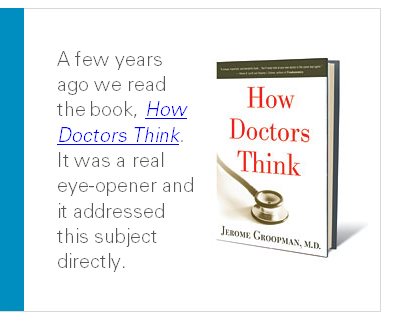 Another gentleman we communicated with recently was told by his local doctor that his Gleason score was 3+4 and he was planning treatment accordingly. When he checked with Dr. Epstein’s lab, he was told his Gleason score was 3+3, but he had some perineural invasion, which was not reported by the first doctor. This isn’t necessarily a serious situation, but it’s certainly one the patient and his treating physician want/need to be aware of when planning treatment or considering active surveillance.
Another gentleman we communicated with recently was told by his local doctor that his Gleason score was 3+4 and he was planning treatment accordingly. When he checked with Dr. Epstein’s lab, he was told his Gleason score was 3+3, but he had some perineural invasion, which was not reported by the first doctor. This isn’t necessarily a serious situation, but it’s certainly one the patient and his treating physician want/need to be aware of when planning treatment or considering active surveillance.
Not all second opinions result in a change. In fact, most confirm the original Gleason score. But there are enough revisions in Gleason scores that, in our opinion, getting a second opinion should be standard protocol.
Proton Therapy vs. Conventional Radiation in Older Patients with Esophageal Cancer
Older patients with esophageal cancer experience more post-treatment heart and lung problems than younger patients. They are also at higher risk for death after receiving a combination of preoperative radiation therapy and chemotherapy.
Researchers at Mayo Clinic in Rochester, MN conducted a study to find out if proton therapy, in place of traditional radiation, would make a difference. They studied 571 patients, age 65 and older, over a six-year period. Forty-three percent received 3D conformal radiation; 36 percent received IMRT; and 21 percent had proton therapy.
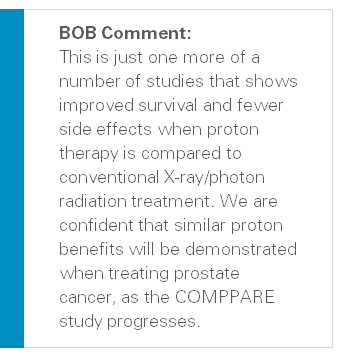 Results showed that patients treated with proton therapy benefited from improved results and lower toxicities (side effects). The proton patients also demonstrated lower rates of heart and lung problems and had a lower postoperative mortality rate than the patients treated with either of the other radiation methods. Researchers attribute this to the pinpoint accuracy of the proton beam which spares healthy tissue and organs.
Results showed that patients treated with proton therapy benefited from improved results and lower toxicities (side effects). The proton patients also demonstrated lower rates of heart and lung problems and had a lower postoperative mortality rate than the patients treated with either of the other radiation methods. Researchers attribute this to the pinpoint accuracy of the proton beam which spares healthy tissue and organs.
Results of this study were reported at the Fourth Annual Particle Therapy Cooperative Group North America Conference in October 2017.

We’ve been producing BOB Tales newsletters monthly for 17 years. During this time there have been important articles that many new members haven’t seen, and some long-time members may have forgotten. So, we decided to periodically re-run some articles from past newsletters. The following is from August 2004.
Impotence More Common After Surgery than Previously Thought
A member sent us a reference to this article. In a study, researchers followed 1,291 men ages 39-79 who were randomly sampled from six National Cancer Institute cancer registries across the U.S. They found that 60 percent of the men were impotent 18 months after surgery, 8 percent experienced total urinary incontinence, and 40 percent had occasional genitourinary problems (JAMA 2000; 283:354-60).
Of the men who received the non-nerve sparing procedure, 66 percent, or two thirds, said that they were impotent after surgery, compared to 56 percent of men who had a bilateral nerve-sparing procedure. Of the men undergoing a unilateral nerve-sparing procedure, 59 percent said they became impotent.
Keep in mind; those who undergo radical prostatectomy are generally younger, healthier males. These are the ones you would expect would have the highest probability of maintaining sexual potency.

Newsletter Feedback
After a newsletter is issued, we receive hundreds of emails. Many are guesses to the brain teaser and many simply tell us they enjoyed the newsletter and they feel we’re doing a great job. Whatever the response, we love to hear from our readers, even constructive criticism. Below are some messages we received after last month’s newsletter:
Bob: You and your daughter are both heroes. Bob, because of you a lot of us have survived prostate cancer with little or no side-effects. Thank you for taking the time to write your book. It and the advice of my twin brother (a doctor) prompted me to learn more about proton therapy for prostate cancer. I have been cancer free for seven years. —BOB Member Gary Webb (Troy, OH)
Hi Deb: I see there is still a problem with the insurance industry recognizing the value of proton treatment for prostate cancer. My story of how I was treated with proton therapy back in 1991 could be useful in demonstrating its success. I’m 27 years out of treatment—if there is anything I can do to help, let me know! —BOB Member Harold Rabin (97 years old, Northbrook, IL)
I was just reading the latest BOB Tales newsletter—I am always thrilled to receive all the latest news from the world of protons! Excellent work, Deb! I was also happy to hear about the upcoming trials comparing proton therapy with conventional radiation treatments.
 I was treated with protons in 2012 and my PSA is very low. I am looking forward to a long, healthy, and side-effect-free life.
I was treated with protons in 2012 and my PSA is very low. I am looking forward to a long, healthy, and side-effect-free life.
I was told by two urologists here in Perth that surgery was the only option for me when I was diagnosed in 2010. Neither of them knew anything about proton treatment and from their manner I expect they didn’t want to know. It would be impossible for doctors to continue ignoring proton therapy if faced with studies proving its effectiveness.
Thanks so much too, Deb, for your ongoing great work with the BOB and for carrying the torch for such an amazing treatment. Please pass on my regards to your father—he is a legend. —BOB Member Jim Nissen, Perth, Australia
Who Are Our Members?
Taekwondo Master
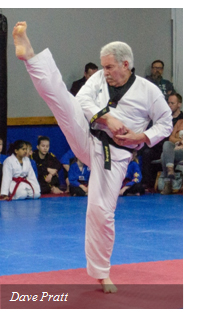 Dave Pratt was treated with proton therapy for his prostate cancer at Loma Linda University Cancer Center in 2007. After 10-plus years, he’s feeling well and working hard in his project management consulting business. Dave also teaches project and program management in the corporate and continuing education program at his local college.
Dave Pratt was treated with proton therapy for his prostate cancer at Loma Linda University Cancer Center in 2007. After 10-plus years, he’s feeling well and working hard in his project management consulting business. Dave also teaches project and program management in the corporate and continuing education program at his local college.
In his spare time, Dave practices taekwando. In fact, he’s a Master in the sport and teaches taekwando as a volunteer for a local Boys and Girls Club. In 2015, Dave made the U.S. National Taekwando Team and competed at the Pan American Championships. “That was fun,” Dave said. “But I was definitely one of the old guys on the team.
Dave talks to newly diagnosed men often, educating them about proton therapy and sharing his experience of treatment. “I enjoy that,” Dave told us. “When I retire in January, I hope to do it more.”
Vietnam Vet, Carpet Pro
Norm Wakeen was born in Port Huron, a small town in Michigan, just 60 miles north of Detroit. When he was 10 years old, a tornado destroyed his family home, forcing them to move to Detroit. After highschool, Norm attended college for a couple of years, but left to pursue a career in the carpet industry. He was drafted into the Army in 1965 and served in Vietnam for 15 months. During that time, he was awarded the Bronze Star along with the Army Commendation Medal.
Norm worked for more than 25 years in the carpet industry before retiring in 1994. After his father’s passing and caring for his ailing mother before her death in 2000, Norm moved to Arizona where he found solace in the beautiful weather. There he pursued his passion for golf.
In early 2007, Norm was diagnosed with prostate cancer. “I felt my world come crashing down around me,” he said. But then a neighbor gave him a book to read—You Can Beat Prostate Cancer and You Don’t Need Surgery To Do It. “It answered so many of my questions and I felt confident about proton therapy by the time I put it down, so I started to look into treatment facilities.”
Norm completed his proton radiation therapy at Loma Linda in April 2007. Since then his PSA has been undetectable. “I am so happy I made the right decision for me,” Norm said. “If my life were to end tomorrow, I couldn’t complain. God has been so good to me and blessed me with a loving family and the opportunity to pursue my dreams. You can’t ask for more then that.”
An Adventist and African Adventurer
“It’s nice to know that ‘old’ prostate cancer survivors—us BOB members—can still make a contribution in the world,” said Arlind Hackett, treated at Loma Linda University Cancer Center in 2015. In January of this year, Arlind, a retired accountant, was offered a unique opportunity. Adventist Health International, a corporation affiliated with Loma Linda University, asked if he’d be willing to travel to Africa to assist a couple of small hospitals with their accounting challenges.
Arlind and a fellow retiree, both from Portland, OR, spent over a month at Blantyre Adventist Hospital in Malawi. While there, they prepared the staff for the installation of a new accounting software system. They also consulted at Malamulo Adventist Hospital in Makwasa, Malawi, working with management to prepare for the 2017 financial audit.
The trip to Blantyre was “grueling,” said Arlind. “It required a couple of plane changes and over 20 hours of flight.” But it was worth it—the people were friendly and cooperative and the warm weather was a welcome change.
During his travels Arlind also spent time at Majete Wildlife Reserve, and gave several devotional talks and told stories to children at local churches. He even taught a missionary mother of three how to play a ukelele. Being a retired minister, these experiences made the trip even more meaningful to Arlind.
“Thank you, Loma Linda, for your commitment to making man whole … Thanks for your pioneering work with proton beam therapy that has provided healing for so many of us with prostate cancer and made it possible for us to serve others,” said Arlind.

Feeling Well, No Side-effects, Staying Active: “I owe all of this to proton therapy.”
We reached out to Dick Sklar of Huntington Beach, CA last month to thank him for a recent contribution he made to proton research at Loma Linda via the Robert Marckini Endowed Chair. He told us his decision to undergo proton therapy for his prostate cancer was “the best medical choice” he’d ever made.
Dick, diagnosed in 2007, was told by his doctor that surgery was his best bet, but Dick was skeptical and began looking into other options. “About this time, a friend of mine said I should read this book, You Can Beat Prostate Cancer,” Dick said. “After reading it, I felt proton therapy looked promising, so I went to Loma Linda and signed up. This was the best thing I could have done.”
We asked Dick his reason for making a gift to proton research and he told us, “My PSA continues to be low after 10 years; I’m feeling well; I’ve had no side-effects; and I’m active—I owe all of this to proton therapy, my friend for giving me the book, and especially the Brotherhood of the Balloon.”
How to Give to Proton Therapy Research
- Donate Online: Visit the LLUCC website.
- Send a Check: Make it out to “LLUCC Proton” with “Marckini Chair” on the memo line and send to: LLUH, Office of Philanthropy, P.O. Box 2000, Loma Linda, CA 92354.
- Make a Call: Contact Elvia DeHaro at 909-558-501
How to Give to Vision 2020
- Donate online: Visit the LLUH website.
- Send a check: Make it out to: “LLUH Vision 2020.” Mail to: LLUH, Office of Philanthropy, P.O. Box 2000, Loma Linda, CA 92354.
- Make a call: Call 909-651-2020.
How to Make a Future Gift
- Make a future gift: Contact Todd Mekelburg at the Office of Planned Giving at Loma Linda University Health at 909-558-5376 or [email protected].
- Other ways to give: Contact Matt Miller at the Office of Philanthropy at Loma Linda University Health at 909-558-3582 or [email protected].
.jpg)
BOB Reunion/Loma Linda “Comes to You”
Thursday, May 31—Portland, OR
Loma Linda University Health is hosting a proton patient reunion and Loma Linda Comes to You event on Thursday, May 31 at the Portland Adventist Medical Center (Education Center A) in Portland, OR.
Rod Neal, Sr. Vice President of Finance, and Andrew Millard, Manager, Radiation Medicine Administration at LLUCC will be in attendance. They hope to meet up with alumni, former patients, BOB members, and friends of Loma Linda University Health.
There will be a social hour beginning at 4:30 p.m. and a buffet dinner at 5:30 p.m. Representatives from LLUCC will present a health update at 6 p.m. followed by a proton therapy update at 7 p.m.
Please RSVP by Thursday, May 24. Call Eileen Rangel at 909-558-5360 or email [email protected].
NAPT Conference 2018
Deb Hickey has just returned from the sixth annual 2018 National Association for Proton therapy conference. She will spend the next couple of weeks compiling her notes and we will provide a summary of this important conference in our next issue.

It’s Never Too Late to Stop Smoking
We all know about the dangers of smoking—it’s linked to dozens of diseases and cancers of many types, including prostate cancer. Yet, people continue to smoke. Sadly, one of the best investments in the stock market has been cigarette stocks. Their growth and dividend payouts have been record breaking. This is one more indicator that a large number of people continue to smoke.
Mayo Clinic recently posted an article on Medical Edge stating that, “Tobacco use is the single largest preventable cause of disease in the world.” This includes 80-90 percent of lung cancer deaths and about 30 percent of all other cancer-related deaths as well as coronary artery disease, heart disease, heart attacks, strokes, and many more. “It’s never too late to quit smoking,” according to Mayo.
In the article they mention health advantages will start accumulating almost immediately when someone stops smoking. They cite some interesting statistics: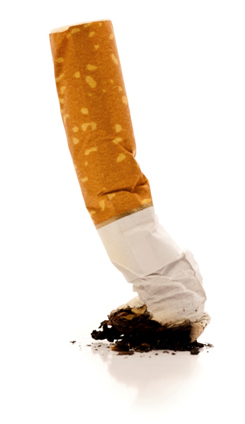
- Less than an hour after quitting smoking, your heart rate will drop to a normal level.
- About 12 hours after stopping, your carbon monoxide blood level will return to normal.
- Within two to three weeks of stopping, your risk of having a heart attack will start to drop.
- Nine months later, shortness of breath and coughing usually goes away. Also your ability to engage in physical activity improves and your sense of smell and taste begins to improve.
- One year after quitting, your risk of coronary heart disease will be half that of when you were smoking.
- After five years, your stroke risk will be the same as that of a non-smoker.
- Ten years after quitting, your risk of lung cancer will be dramatically lower and the risk of mouth, throat, esophageal, bladder, kidney, pancreatic, and other cancers will go down.
- After 15 years, your overall health risks are roughly the same as individuals who had never smoked.
Mayo states, “The human body is remarkable in its ability to repair and restore itself.” And stopping smoking not only adds years to your life, it adds quality of life to those years.
See Mayo Clinic’s list of 10 Ways to Resist Tobacco Cravings.
Diabetes from Mouthwash?
Bottom Line Personal interviewed Marvin Fier, DDS, about a study titled, Over-the-counter mouthwash use and risk of pre-diabetes/diabetes. The study concluded that, while using mouthwash two or more times a day may keep your breath fresh, it may also increase your risk of developing Type 2 diabetes.
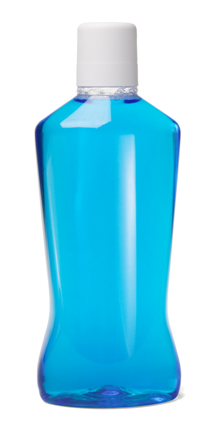 The study involved 945 adults over a three-year period. The subjects were already overweight and consequently already at risk for diabetes. But researchers indicated that the study results also apply to people who aren’t overweight.
The study involved 945 adults over a three-year period. The subjects were already overweight and consequently already at risk for diabetes. But researchers indicated that the study results also apply to people who aren’t overweight.
The study found that participants who used mouthwash two or more times a day had a 55 percent higher risk for prediabetes or diabetes than those who didn’t use mouthwash.
Most mouthwashes contain alcohol, synthetic oils or essential oils that kill microbes, including beneficial microbes that help the body make nitric oxide. Nitric oxide is an important compound that everyone needs to protect against obesity, insulin resistance and high blood pressure.
According to Dr. Fier, you don’t need to use mouthwash at all. “It’s not particularly effective at improving oral health anyway. For example, brushing and flossing are much better at disrupting plaque, the biofilm that sticks to teeth and causes cavities, gum disease, and often bad breath.”
Dr. Fier suggests you use thin, unwaxed floss for dislodging plaque. And if you must use mouthwash, choose alcohol-free products. He also warns not to ignore persistent bad breath or a bad taste. If you have these conditions, you should speak with your dentist or primary care physician.
The Benefits of Sunlight
For decades, we’ve been covering ourselves up and shying away from the sun, for fear of skin cancer and premature aging. But new research suggests that completely shunning sunlight isn’t such a good idea. A recent Forbes article suggests you should soak up some sunshine every day. Here’s why:
- It improves your mood: Moderate sun exposure helps improve your mood and focus by boosting the serotonin levels in your body.
- It improves sleep: The brighter your daylight exposure, the more melatonin you produce at night. Melatonin helps improve sleep and synchronizes your biological clock, lowering stress.
- It promotes bone growth: Sunlight is a primary source of Vitamin D, which promotes calcium absorption and is essential for bone growth and formation.
- It helps strengthen the immune system: Vitamin D is also important in building up the immune system.
- It lowers blood pressure: Moderate exposure to UV rays can cause a significant drop in blood pressure levels. Lower blood pressure levels help cut down the risk of stroke and heart disease.
- It may reduce the risk of melanoma: Safe sun exposure may actually protect you from skin cancer. An adequate amount of sunlight has also been linked to a reduced risk of certain cancers including colon, ovarian, pancreatic, and prostate cancer.
- It promotes weight loss: As little as 20 to 30 minutes of early morning sun exposure can help reduce body fat.
Series: “Make Vegetables Taste Good”
This is the 19th segment on a subject that’s consistent with our Anticancer series. We made it our mission to find recipes that make the most healthful vegetables taste delicious. And, we’ve tried them all!
Hummus and Vegetable Pizza
Dough:
- 3 1/2 cups all-purpose flour (Deb uses brown rice flour)
- 1 teaspoon salt
- 1 teaspoon instant yeast
- 1 pinch sugar
- 3 tablespoons olive oil
- 1 cup lukewarm water
Toppings:
- 1 cup hummus
- 8-10 mushrooms, sliced
- 1 handful fresh spinach
- 1/2 cup black olives
- 1/2 cup artichoke hearts in oil, roughly chopped
- 1/2 cup cherry tomatoes, cut into halves
- 1/2 red onion, cut into rings
- 2 teaspoons dried oregano
- red pepper flakes, to taste (optional)
Directions:
In a medium-sized bowl, combine all dry ingredients. Then add the oil and the lukewarm water. Knead with your hands until the dough is smooth. Form into a ball and cover the bowl with a damp cloth or plastic wrap. Place in a warm oven and let it rise for about an hour until it has doubled in size.
Move the dough to a flour-dusted surface, divide the dough into two balls, and form it into two pizzas using your hands.
Evenly spread the pizzas with the hummus and add the pizza toppings on top. Sprinkle with oregano and red pepper flakes. Bake for about 20 minutes at 350°F.

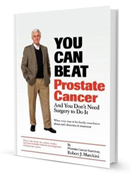 Still the Top Referral Source
Still the Top Referral Source
Eleven years after publication, the majority of new members still mention Bob’s book, You Can Beat Prostate Cancer, as the “referral source” on their application for membership and just about all incoming emails from prospective proton patients say they’ve read it. Clearly the book is valuable to newly diagnosed men and we couldn’t be happier about that. But we still need your help to keep the book front and center on Amazon as other books on prostate cancer treatment options are popping up all the time.
If you haven’t written a review of Bob’s book and you found it helpful to you during the treatment decision making process, please let others know about it by posting a review on Amazon and rating it from one to five stars. Amazon’s search engine algorithm works pretty simply—the more positive reviews, the higher the book’s ranking in the search results for keywords like “prostate cancer.” Please help us maintain our visibility on Amazon!
If Bob’s book, You Can Beat Prostate Cancer, was helpful to you, please post a review. Click on the gray “Write a Review” button. All it takes is a few sentences!
Excerpts from recent reviews are on the following page—thank you Patrick Going, Anthony M., and Ken430TX.

The deciding factor for me!
This book was the reason I pursued proton beam therapy at Loma Linda. As others have said, it’s a “must read.”—Patrick Going

I’m going on four years since completing treatment and I could not be happier with the results.
This book is the reason for my decision to have proton therapy to treat my prostate cancer. As a result I am going on four years since completing treatment and I could not be happier with the results. Considering my cancer was rated “high risk,” the quality of life I continue to enjoy speaks for itself. —Anthony M.

The book could save your life.
I received this book from the University of Florida Proton Treatment Center when I was diagnosed with an aggressive form of prostate cancer. It is clear, concise, well written, and gives important details about alternative treatments for prostate cancer … I am one year cancer free now, and very happy with my decision … This book is well worth reading! —Ken430TX
Buy Online, in Bulk or in Spanish
Online: Paperback: $19.00--•--Kindle: $7.99--•--NOOK Book: $9.99--•--Apple iBook: $9.99
In Bulk: Conctact us for a discount price list. Proceeds from book sales support proton therapy research through the Robert J. Marckini Endowed Chair at LLUCC.
In Spanish: Buy the print version or in eBook format.
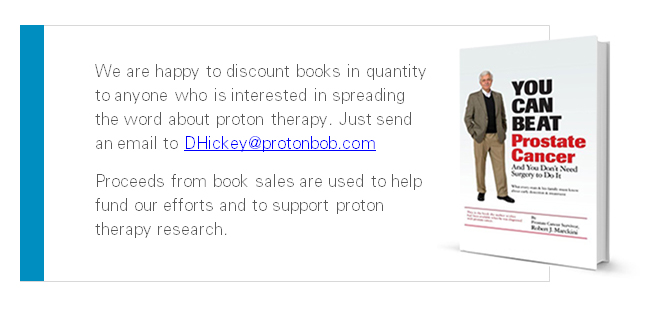
.jpg)
Stockpiling for Emergencies
MoneyTalksNews.com reported that a team of survival experts agreed on several ways that households should prepare for emergencies. Stockpiling food and water is like buying insurance: Your household may never face a devastating earthquake, a crippling hurricane or other natural disaster, or a flu pandemic or other disaster, but if it does, and you’re cut off from food and services, a cache of food, water, and other supplies may prove priceless. Here are some recommendations:
- Store one gallon of water per day per person—prioritize water over food. Replace water you’ve stored yourself every six months. Don’t forget water for pets!
- Consider buying a large quantity of commercially prepared emergency supplies, such as an eight-day supply of “Survival Tabs” emergency food ration (less than $25 on Amazon).
- Buy long-lasting foods that taste good, need no cooking, and are nutrient-dense including such things as peanut butter, nuts, trail mix, cereal, power bars and granola bars, dried fruit, canned meat and vegetables, powdered milk, and vitamins.
- Store fruits and vegetables in a cool, dry, dark place before an impending storm (apples, citrus, unripe avocados, potatoes)
- Buy dried foods. If you think you’ll need food for weeks or months, buy
dried grains, powdered milk, and dehydrated vegetables and fruits.
Fires Caused by Improperly Discarded Batteries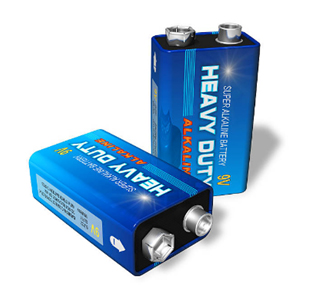
We’ve written about this before. We recently heard about another fire that totally demolished a home. The fire was caused by an improperly disposed 9-volt battery.
All batteries have the potential of starting a fire when improperly disposed in your trash. The 9-volt battery is particularly vulnerable because the terminals are side-by-side on the same plane. So, if there is a good conductor in your trash, such as steel wool, aluminum, or some other metal, the terminals can be easily short circuited and a fire can result. See video.
The solution? Put batteries back in the original containers when discarding or put electrical tape over the terminals before you put them in the trash.
Did You Know …
- The Denver International Airport is twice the size of Manhattan.
- Oregon’s Crater Lake is deep enough to cover six Statues of Liberty stacked on top of each other.
- The one-woman town of Monowi, Nebraska is the only officially incorporated municipality with a population of one! The sole, 83-year-old resident is the city’s mayor, librarian, and bartender.
- The entire town of Whittier, Alaska lives under one roof.
- South Florida is the only place in the world where alligators and crocodiles coexist in the wild.
- Arizona and Hawaii are the only states that don’t observe daylight savings time.

Last Month’s Brain Teaser
 A sundial has the fewest moving parts of any timepiece. Which has the most?
A sundial has the fewest moving parts of any timepiece. Which has the most?
Answer: An hourglass with thousands of grains of sand.
Winner: Robert Reimann is our March/April brain teaser winner and he was delighted when we informed him! Robert was treated for prostate cancer with proton therapy in 2012 at Loma Linda University Cancer Center.
Robert was born in Slovenia in 1939. He went to grammar school in Eisenerz, a mining town, in Austria. In 1952, his family immigrated to Los Angeles, CA.
“I was destined to become either a blacksmith or cabinet maker,” Robert said. “But, in middle and high school, I developed an interest in mathematics and science.”
In 1960, Robert worked at the Lawrence Radiation Lab, Berkeley, as lab assistant to a physics professor. In 1963, he was drafted into the Army, 102nd Signal Bn, and assigned to Germany. Upon release from the Army, it was his good fortune to benefit from passage of a new GI Bill. In 1966, he was accepted to pursue studies at California State University in Hayward, CA. “I studied around the clock—four quarters per year, at times over 20 credits per quarter,” he said. Robert received his bachelor’s degree in mathematics in 1967, his master’s degree in mathematics in 1968, and a community college teaching certificate in 1971. From 1968 to 2002, he worked for the US Navy, EPA, and NOAA, as mathematician, statistician, and operations research analyst, respectively.
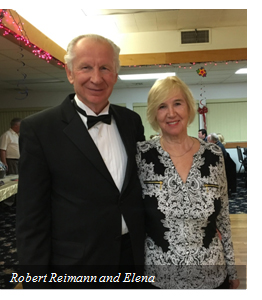 In 2011, Robert was diagnosed with prostate cancer. “My head was spinning,” he said. “My doctor offered me X-ray treatment, iodine isotope seeds, and/or surgical removal, but none of these were intriguing to me.” He later recalled a friend having mentioned a “different method of treatment” called proton therapy “at a place called Loma Linda.”
In 2011, Robert was diagnosed with prostate cancer. “My head was spinning,” he said. “My doctor offered me X-ray treatment, iodine isotope seeds, and/or surgical removal, but none of these were intriguing to me.” He later recalled a friend having mentioned a “different method of treatment” called proton therapy “at a place called Loma Linda.”
After doing his own research Robert concluded that proton therapy would be best for him. He went to Loma Linda in January 2012. Treatment went well and Robert was relieved and grateful.
These days, he enjoys spending time with his partner, Elena. The two enjoy ballroom dancing and traveling. They live in the forest of Stevens County, WA. Robert has two children from his first marriage, and later he adopted an abandoned infant from Romania. His PSA remains low; his life is full. “Thank you Loma Linda doctors and staff!”
New Brain Teaser (An easy one?)
A man stands on one side of a river, his dog on the other. The man calls his dog, who immediately crosses the river without getting wet and without using a bridge or a boat. How did the dog do it?
Send your answer to [email protected] for a chance to win a signed copy of Bob Marckini’s book, You Can Beat Prostate Cancer.
Dear God
A teacher asked her class to write notes to God. Here are some they handed in:
- Dear God: Instead of letting people die and having to make new ones, why don’t you keep the ones you have?
- Dear God: Maybe Cain and Abel would not have killed each other if they had their own rooms. That’s what my Mom did for me and my brother.
- Dear God: I bet it’s hard to love everyone in the whole world. There are only four people in my family and I’m having a hard time loving all of them.
- Dear God: Is it true my father won’t get into heaven if he uses his golf words in the house?
- Dear God: Did you really mean “do unto others as they do unto you?” Because if you did, then I’m going to get my brother good.
- Dear God: We read Thomas Edison made light. But in Sunday school they said you did it. So, I bet he stole your idea.
And our favorite:
- Dear God: I think about you sometimes, even when I’m not praying.
Long, Happy Life
A woman walked up to a smiling and wrinkly old man rocking in a chair on his porch. “I couldn’t help noticing how happy you look,” she said. “What’s your secret for a long happy life?”
“I smoke three packs of cigarettes a day,” he said. “I also eat fatty foods and never exercise.”
“That’s amazing,” the woman said. “How old are you?”
“Twenty-six,” he said.
Ten Dollars is 10 Dollars
Every year, Smitty and his wife Martha went to the State Fair. And every year, Smitty would say, “Martha, I’d like to ride in that there airplane.” And every year, Martha would reply, “I know, Smitty, but that airplane ride costs 10 dollars, and 10 dollars is 10 dollars.”
This one year Smitty and Martha went to the fair and Smitty said, “Martha, I’m 80 years old. If I don’t ride that airplane this year I may never get another chance.”
Martha replied, “Smitty, that there airplane ride costs 10 dollars, and 10 dollars is 10 dollars.”
The pilot overheard them and said, “Folks, I’ll make you a deal. I’ll take you both up for a ride. If you can stay quiet for the entire ride and not say one word, I won’t charge you, but if you say one word it’s 10 dollars.” Smitty and Martha agreed and up they went.
The pilot performed all kinds of twists and turns, rolls and dives, but not a word was heard. He even did a nose dive, pulling up 15 feet above the ground, but still not a word was heard. When they landed, the pilot turned to Smitty, “By golly, I did everything I could to get you to yell out, but you didn’t.”
Smitty replied, “Well, I was gonna say something when Martha fell out, but 10 dollars is 10 dollars!”
Ramblings of an Old Mind
- Today I was in a store that sells sunglasses. A young lady walks over to me and asks, “What brings you in today?” I looked at her and said, “I’m interested in buying a refrigerator.” She didn’t know how to respond.
- I thought about making a fitness movie for folks my age and calling it “Pumping Rust.”
- When people see a cat’s litter box they always say, “Oh, have you got a cat?” Just once I want to say, “No, it’s for company.”
- Employment application blanks always ask who is to be called in case of an emergency. I think I should write, “An ambulance.”
- The easiest way to find something lost around the house is to buy a replacement.
- Did you ever notice: The Roman Numerals for 40 are XL.
- Did you ever notice: When you put the two words “The” and “IRS” together it spells “Theirs.”
- Lord, keep your arm around my shoulder and your hand over my mouth.
May you always have love to share, cash to spare, and friends who care.
Quote of the Month:
“Anyone who goes to a psychiatrist ought to have his head examined.” —Samuel Goldwyn

Children of the Fabulous ’50s
This should resonate with many of our members!
Murgatroyd—remember that word? Would you believe the email spell checker did not recognize the word murgatroyd? Heavens to murgatroyd!
Lost words from our childhood: Words gone as fast as the buggy whip! Sad, really. The other day a not-so-elderly lady said something to her son about driving a jalopy and he looked at her quizzically and said, “What the heck is a jalopy?”
He never heard of the word jalopy! She knew she was old, but not that old. Well, I hope you are hunky dory after you read this and chuckle.
About a month ago, I illuminated some old expressions that have become obsolete because of the inexorable march of technology. These phrases included, “don’t touch that dial,” “carbon copy,” “you sound like a broken record,” and “hung out to dry.”
Back in the olden days we had a lot of “moxie.” We’d put on our best “bib and tucker” to “straighten up and fly right.” Heavens to Betsy! Gee whillikers! Jumping Jehoshaphat! Holy moley! We were “in like Flynn” and “living the life of Riley.”
Even a regular guy couldn’t accuse us of being a knucklehead, a nincompoop, or a pill. Not for all the tea in China! Back in the olden days, life used to be swell, but when’s the last time anything was swell? Swell has gone the way of beehives, pageboys, and the D.A., of spats, knickers, fedoras, poodle skirts, saddle shoes, penny loafers, and pedal pushers. And don’t forget saddle stitched pants. Oh, my aching back! Kilroy was here, but he isn’t anymore.
We wake up from what surely has been just a short nap and before we can say, “Well, I’ll be a monkey’s uncle!” Or, this is a “fine kettle of fish!” We discover the words we grew up with—the words that seemed omnipresent as oxygen—have vanished with scarcely a notice from our tongues and our pens and our keyboards.
Poof, go the words of our youth—the words we’ve left behind. We blink and they’re gone. Long gone: Pshaw; The milkman did it; Hey, it’s your nickel; Don’t forget to pull the chain; Knee high to a grasshopper; Well, Fiddlesticks; Going like sixty; I’ll see you in the funny papers; Don’t take any wooden nickels; Wake up and smell the roses … It turns out there are more of these lost words and expressions than Carter has liver pills.
This can be disturbing stuff (Carter’s little liver pills are gone too.)!
We of a certain age have been blessed to live in changeable times. For a child, each new word is like a shiny toy; a toy that has no age. We at the other end of the chronological arc have the advantage of remembering there are words that once existed and there were words that once strutted their hour upon the earthly stage and now are heard no more, except in our collective memories. It’s one of the greatest advantages of aging; leaves us to wonder where Superman will find a phone booth.
We are the children of the Fabulous ’50s. No one will ever have that opportunity again. We were given one of our most precious gifts—our memories!
See ya later, alligator.
Low PSAs to all!
Bob Marckini and Deb Hickey
To print the BOB Tales newsletter or view the newsletter with a larger font size, click here for the PDF file.
NO MEDICAL ADVICE: Material appearing here represents opinions offered by non-medically-trained laypersons. Comments shown here should NEVER be interpreted as specific medical advice and must be used only as background information when consulting with a qualified medical professional.

